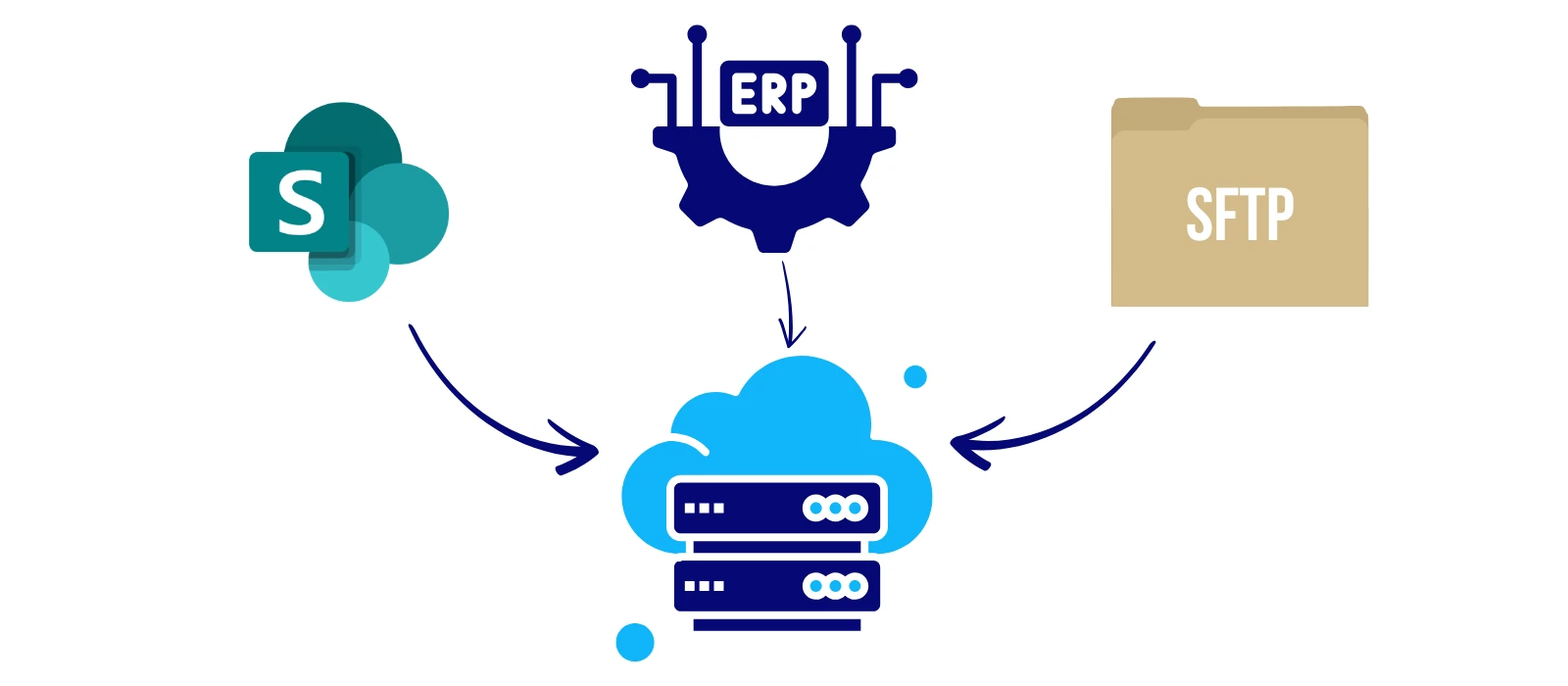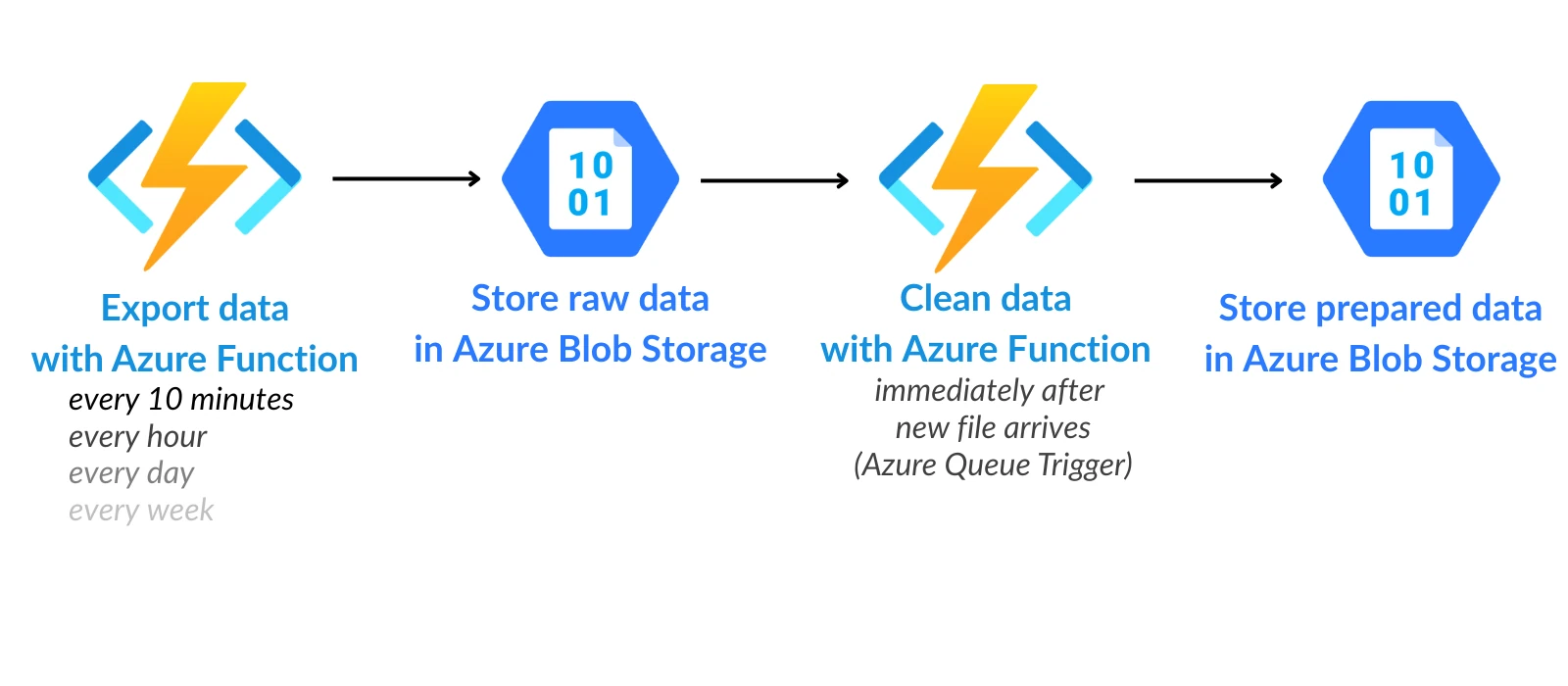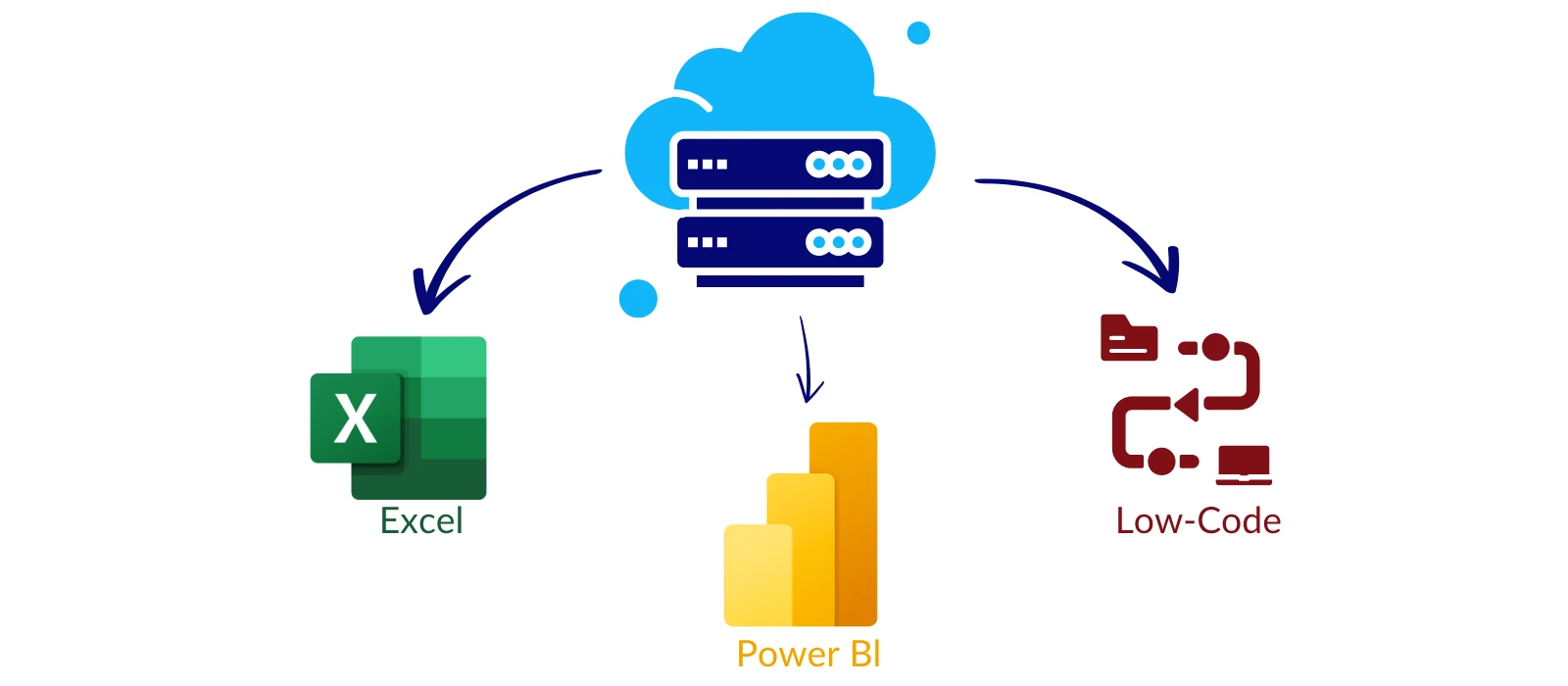Data Lake for Scaleup Company
Project insights: challenges, solution, transformational impact
1. Introduction: Why a Data Lake Matters for Scaleup Companies
Scaleup companies often face unique challenges when it comes to managing their growing data needs. Without a dedicated IT department, they rely heavily on tools like Excel, ERP systems, and Power BI dashboards to handle daily operations. However, as the volume and complexity of data increase, these tools can quickly become a bottleneck, leading to fragmented data, manual inefficiencies, and limited scalability.
This is where we step in. At ADEAL Systems, we specialize in building tailored Data Lake solutions that empower scaleup businesses to consolidate their data into a single, centralized repository. For one of our customers, a fast-growing pharma company heavily reliant on Excel and Power BI, we developed a simple yet powerful Data Lake. This solution aggregates data from multiple sources, such as SharePoint, ERP systems, and third-party tools, into a unified format, enabling them to streamline operations and make data-driven decisions more effectively.
In the following sections, we’ll explore the challenges they faced, the solution we built, and the transformational impact it has had on their business.

2. The Data Landscape
Our customer, a growing scaleup company, faced several data management challenges typical of organizations without a dedicated IT department. Their operations heavily relied on an ERP system, numerous Excel files stored on SharePoint, and Power BI dashboards for reporting.
While these tools provided essential functionality, the data environment was fragmented. Key issues included:
-
Excel Overload: Multiple files with frequent updates and no clear version control.
-
ERP Data Gaps: Limited accessibility to historical and real-time data for analysis.
-
Disconnected Systems: Additional data exports from third-party tools created silos.
This setup made it difficult for them to consolidate data, maintain accuracy, or efficiently analyze it across systems. They needed a solution to bring all their critical business data together into one place: an accessible, organized, and scalable format.
In response, we designed and implemented a custom Data Lake to address these pain points.
3. Building Our Data Lake
To address the challenges our customer faced, we built a custom Data Lake leveraging Azure Blob Storage and Azure Function Apps.
-
Azure Blob Storage:
We used Azure Blob Storage as the foundation of the Data Lake. Its flexibility allowed us to store various data types like Excel backups, ERP exports, and third-party system data in a structured and cost-effective manner. Data was organized in CSV format for simplicity and compatibility with their existing tools. -
Azure Function Apps:
To automate the ingestion and processing of data, we implemented Azure Function Apps. These serverless functions handled:- Scheduled Backups: Automatically backing up and versioning Excel files from SharePoint.
- ERP Data Exports: Regularly extracting and storing updated data from the ERP system via the API.
- Third-Party Integrations: Importing data from other systems as needed (e.g. SFTP servers).
By using these Azure services, we delivered a solution that is cost-efficient, scalable and user-friendly.

4. The Benefits of a Centralized Data Lake
Implementing a centralized Data Lake provided our customer with transformative benefits, addressing their fragmented data environment and enabling streamlined operations.
A Single Source of Truth: By consolidating data from SharePoint, the ERP system, and third-party tools into one place, the Data Lake ensures that all critical business data is consistent, up-to-date, and easily accessible. This eliminates confusion caused by version mismatches or data silos.
Improved Data Accessibility: Storing data in a unified CSV format makes it simple for the team to use their existing tools, like Power BI and Excel, to analyze and visualize information. Employees no longer need to hunt for data across multiple platforms or manually combine datasets.
Scalability and Future-Proofing: The Azure-based architecture ensures that the solution can grow alongside the business. Whether adding new data sources or scaling up storage, the Data Lake is designed to handle increased demands effortlessly.
Automation and Efficiency: With Azure Function Apps automating data ingestion, versioning, and backups, manual processes are minimized, saving time and reducing the risk of human error. This frees up employees to focus on higher-value tasks instead of repetitive data management.
Empowering Data-Driven Decisions: Having all company data centralized and up-to-date allows for more effective decision-making. The Data Lake fuels Power BI dashboards with accurate data, enabling real-time insights and supporting the creation of use cases through low-code tools.
By streamlining their data ecosystem, the company has gained the tools and flexibility needed to operate efficiently, grow faster, and adapt to future challenges.
5. How We Leverage the Data Lake
The Data Lake we built has become an essential part of our customer’s daily operations, transforming how they manage and use their data. Here are the primary ways they leverage this solution:
Power BI Dashboards: The centralized Data Lake serves as the backbone for the company’s Power BI dashboards. With consistent and up-to-date data from the ERP system, SharePoint, and third-party tools, they can generate insightful reports and visualizations. Decision-makers now have real-time access to critical metrics, enabling faster and more informed decisions.
Data Analysis and Use Case Creation with Low-Code Tools: The organized, CSV-based structure of the Data Lake simplifies data analysis and supports experimentation with low-code tools. Teams can quickly develop and test new use cases, such as sales forecasts or process optimizations, without needing advanced technical skills or heavy IT support.
Dynamic Excel Updates via PowerQuery: The company’s reliance on Excel has been streamlined with PowerQuery integrations. Employees can pull data directly from the Data Lake into Excel, ensuring that spreadsheets are always populated with the latest information. This eliminates the need for manual data entry or cumbersome copy-paste workflows.
Supporting Scalability and New Integrations: As the company grows, the Data Lake is ready to adapt. New data sources can be easily integrated into the existing architecture, ensuring that the solution evolves with their needs.
Through these use cases, the Data Lake not only improves operational efficiency but also empowers the company’s teams to work smarter and more collaboratively, driving value across the business.

6. Lessons Learned and Best Practices
Building and implementing the Data Lake for our customer provided valuable insights into managing data for scaleup companies. Here are the key lessons we learned and the best practices we followed:
Simplicity is Key: For companies without an IT department, overly complex solutions can be counterproductive. By using familiar tools like CSV files and integrating with existing platforms (Excel, Power BI), we ensured the Data Lake was easy to understand, use, and maintain.
Automate Where Possible: Automation is critical for reducing manual effort and minimizing errors. By leveraging Azure Function Apps for data ingestion, backups, and versioning, we ensured the Data Lake runs smoothly with minimal intervention.
Prioritize Scalability from the Start: Designing the Data Lake to accommodate future growth is essential. Azure Blob Storage and serverless architecture provided the flexibility to handle increasing data volumes and new integrations without requiring a complete overhaul.
Focus on Data Organization: Well-structured storage is the foundation of a functional Data Lake. Grouping data by source and ensuring consistent naming conventions made it easy to navigate and retrieve information when needed.
Maintain Data Quality and Version Control: Versioning Excel files and managing regular backups ensured that data accuracy and historical records were preserved. This was especially important for teams that rely on Excel for critical operations.
Make the Solution Accessible to Non-Technical Teams: Empowering non-technical employees to access and use the Data Lake was a top priority. By focusing on compatibility with Excel, Power BI, and low-code tools, we enabled everyone in the organization to leverage the benefits of centralized data without specialized training.
Regular Monitoring and Updates: Implementing a Data Lake is not a one-time task. We set up monitoring processes to ensure smooth operation and created a roadmap for updates and enhancements based on the customer’s evolving needs.
By following these best practices, we delivered a solution that not only addressed immediate challenges but also positioned the company for long-term success.
7. Conclusion: The Data Lake as a Growth Enabler
For our customer, the implementation of a Data Lake has been a transformative step in their journey as a scaleup company. By consolidating data from SharePoint, ERP systems, and third-party tools into a single, accessible repository, they’ve overcome the inefficiencies of fragmented data and manual processes.
This solution has become much more than just a centralized data storage system. With automated workflows, real-time insights through Power BI dashboards, and support for low-code tools, the Data Lake empowers teams to make smarter, faster decisions while staying focused on business growth.
The scalability and simplicity of the Azure-based architecture ensure the solution grows alongside the company, ready to handle new challenges, integrate additional data sources, and support evolving use cases.
For scaleup companies seeking to unlock the full potential of their data, a well-designed Data Lake offers a clear path to enhanced efficiency, better decision-making, and long-term success.




